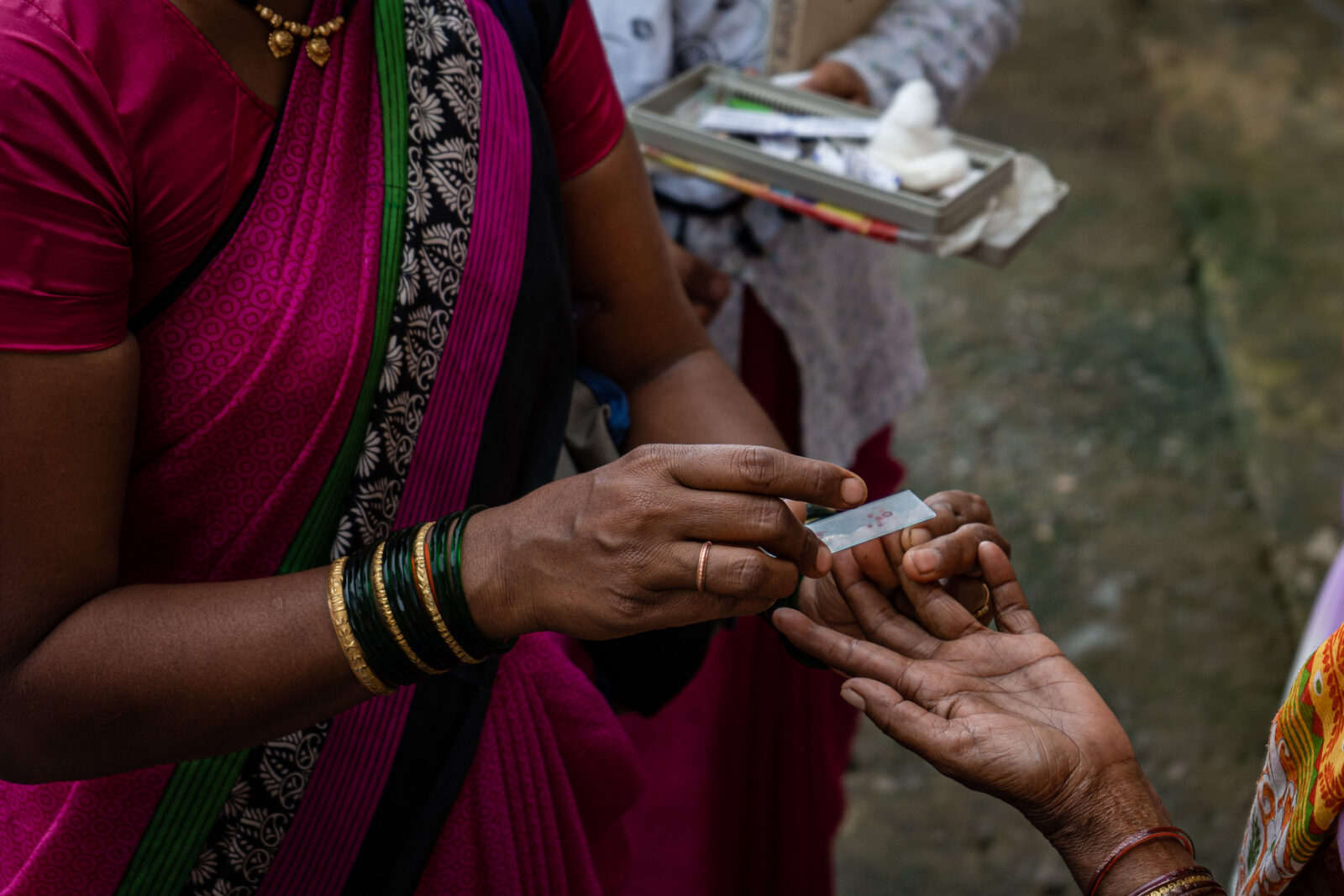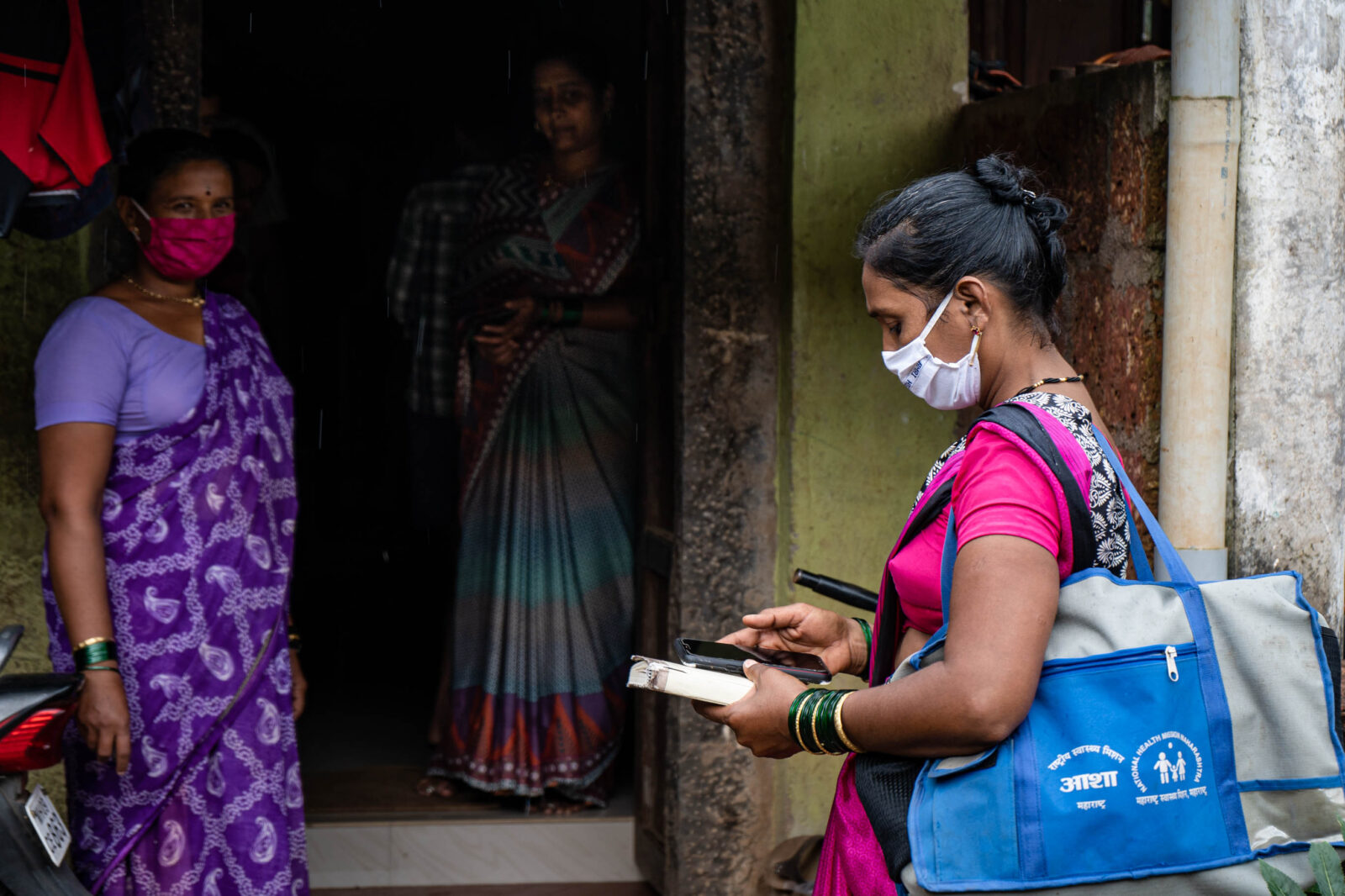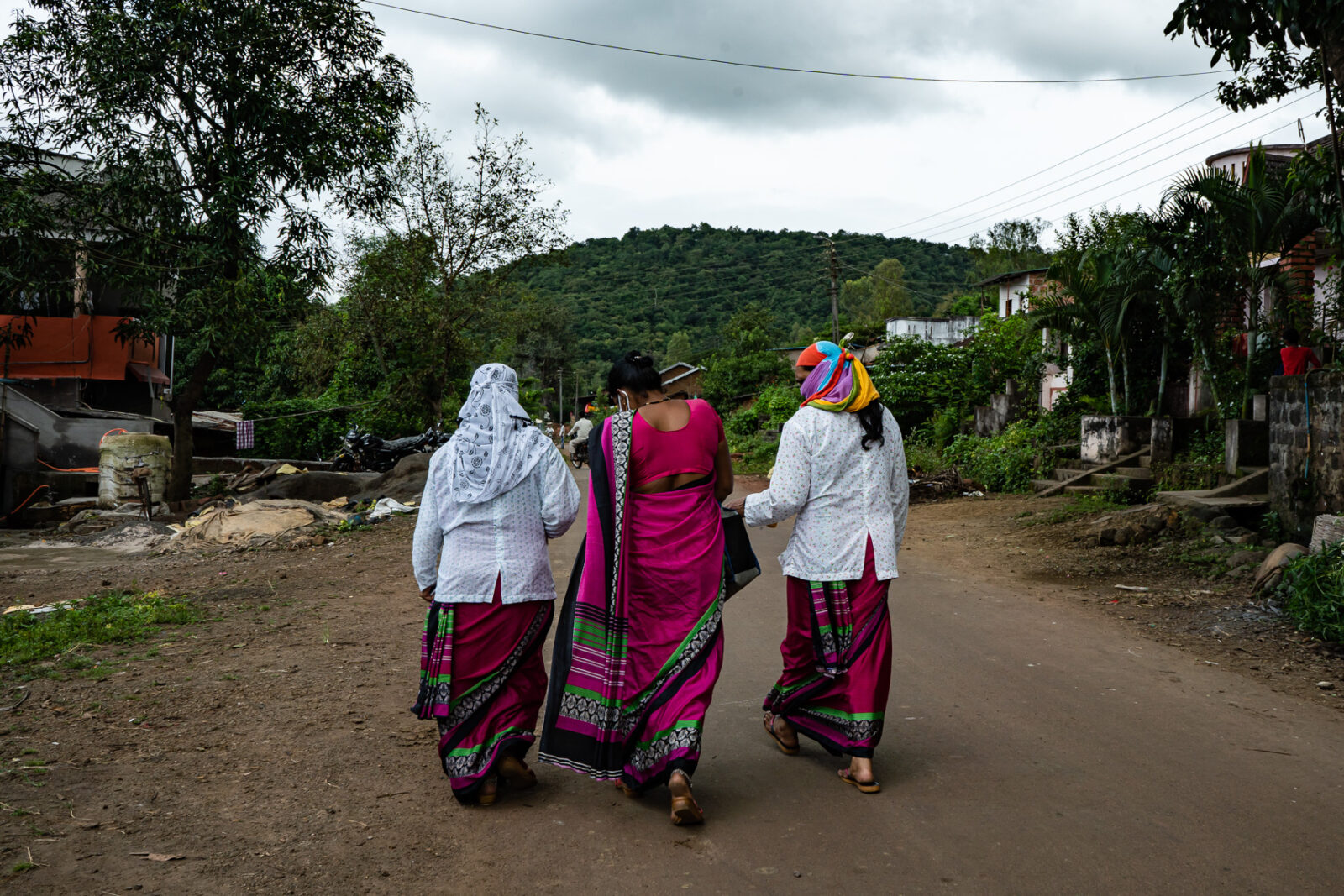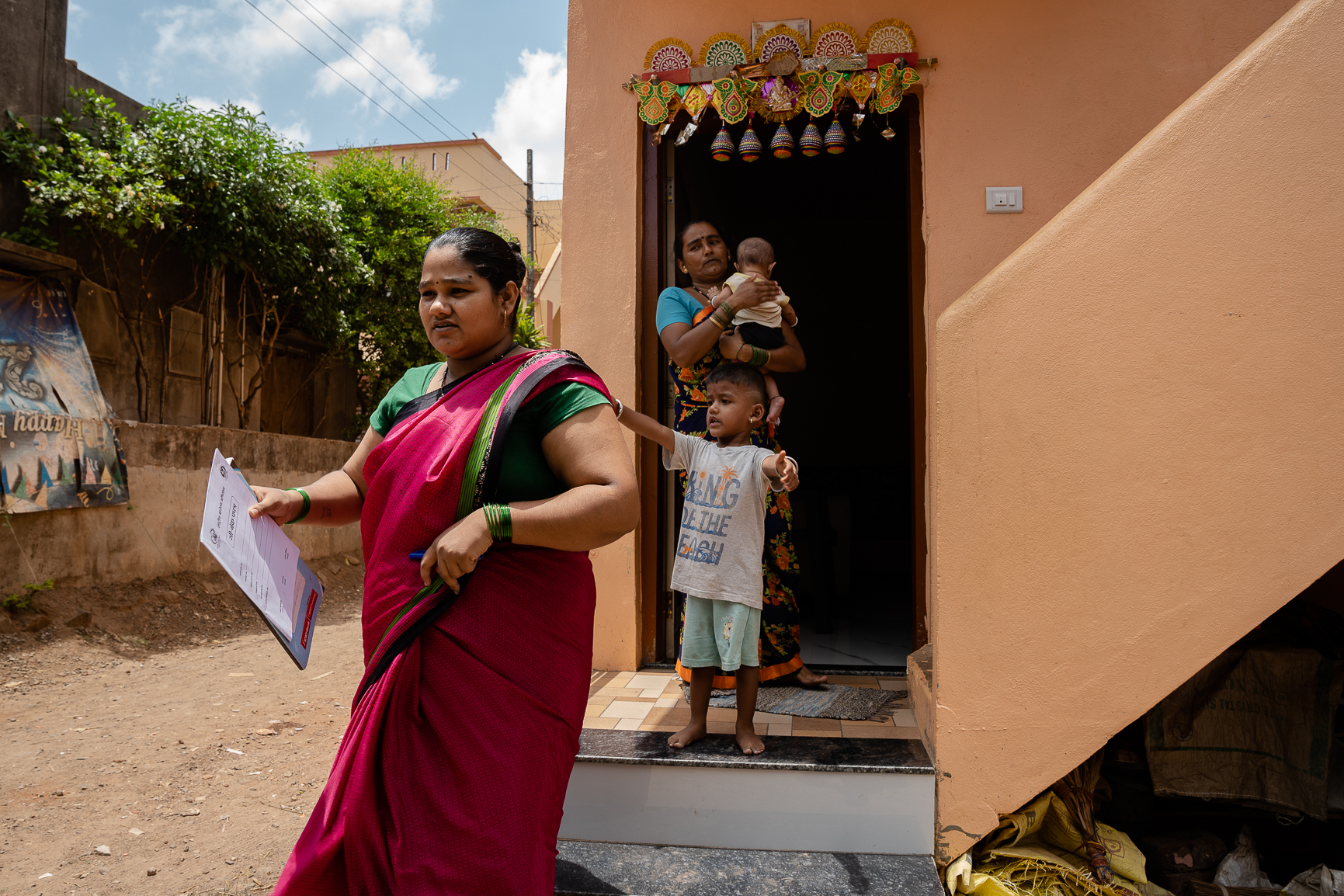KOLHAPUR, MAHARASHTRA: 44-year-old Neeta Kashid has no time to rest. The community health worker’s day is packed with visits to women and children in her village in southwest Maharashtra, assisting them with health emergencies, providing maternal and neonatal support, conducting surveys and immunization campaigns, and acting as the face of the Indian government’s health and sanitation drives in the area. On top of all this, she has to tend to a small farm. Despite being a full-time frontline health worker, she makes less than minimum wage, and relies on extra income from selling produce to make ends meet.
“My salary is not enough to survive,” said Kashid, “I have two school-going children. I need to pay their fees and raise them.”
Kashid is one of roughly a million Accredited Social Health Activists (ASHA), part of an Indian government program that serves as a critical link between rural and poor communities and the public healthcare system. They were catapulted into the spotlight for their role in ensuring access to primary care for the rural poor as COVID-19 devastated India in 2021, winning a Global Health Leader Award from the World Health Organization.
But the award has also spurred increased scrutiny of their working conditions, not just for ASHA workers, but for community health workers (CHWs) all over the world. CHW programs have been lauded as a cost-effective way to reduce maternal and infant mortality, HIV, tuberculosis, and many other diseases over the past decades. But the reason they’re cost-effective is because this overwhelmingly female workforce is poorly paid, like Kashid, or not paid at all — in many countries they are an all-volunteer corps.
A 2022 report by Women in Global Health, a global nonprofit, estimates there are 6 million female health workers who are unpaid or underpaid, and say they believe this is a conservative figure due to a shortage of available data. Their research built on a 2015 paper in Lancet which claimed that unpaid work by CHWs potentially contributed $1.4 trillion to the global economy — implying that the unpaid labor of mostly women health workers was subsidizing almost 2.5% of global GDP at the time.

“Why is it that we don’t put a price tag on this particular labor force and build that into the cost of these programs?” says Roopa Dhatt, a physician who is the executive director of Women in Global Health. “It is exploitation, and it should be called out.”
ASHA workers across India have gone on strike this year, and continue to strike in some states, demanding better pay and formal employment status, which would come with health and pension benefits. They are part of a growing wave of organizing around the world by health workers and experts calling on the governments, donors, and nonprofits who have reaped the benefits of CHW labor to match their rhetoric of praise with a living wage.
“[CHWs] are an anonymous donor, a nameless benefactor to everyone else,” says Madeleine Ballard, the executive director of the Community Health Impact Coalition, which advocates for the professionalization of CHWs around the world. “In the vast majority of communities around the world, CHWs are the working poor. In the context of poverty and limited access to decent work opportunities for women, this is not a free choice to volunteer, but it’s actually wage slavery. I don’t volunteer for my community 37 hours a week, you know?”
“The irony is a lot of these programs are funded by international organizations that have a real rhetoric around women’s empowerment,” Ballard adds. “And that’s used to provide moral cover for what are, in effect, programs in which female labor is cheap.”

A job so great it can’t be paid
CHW programs have evolved through what Ballard calls a couple of “hype cycles”. The Chinese government pioneered village health workers starting in the 1930s. These “barefoot doctors” became famous worldwide in the ’50s and ’60s, and by the ’70s had inspired programs globally as the international community rallied around the goal of providing primary healthcare for all by the end of the 20th century.
The economic crises of the ’80s marked a setback for the growth of these programs, but interest in them was revived in the new millennium as the HIV pandemic focused attention on providing services to rural communities across the African continent. CHWs came to be seen as an effective way to reach marginalized and vulnerable populations in tackling the biggest problems in global public health at the time, such as malaria and tuberculosis. Today, CHWs are going through another hype cycle as yet another pandemic rips through the globe.
“The amount of money that goes into hospital care is so extraordinary, and the evidence that investing in hospitals themselves will improve the health of a population — it just doesn’t exist,” says Henry Perry, a doctor who’s a leading researcher on CHWs at Johns Hopkins University. “CAT scanners, open heart surgery, kidney transplants, all of this stuff is valuable, but it’s very expensive when you compare the return on investment to teaching community health workers how to diagnose and treat childhood pneumonia or detect hypertension.”
The ASHA program has its roots in a 2002 program that started in Chhattisgarh, one of the poorest states in India, and was adopted nationwide in 2005. In India’s case, the focus was on child mortality.
“ASHA became a necessity for services being provided by the government,” says Sujatha Rao, a former Health Secretary at the Ministry of Health and Family Welfare who was involved in launching the project. “The key target was of course reducing maternal and infant mortality levels that were unacceptably high and had to be brought down.”
When the program was introduced, the responsibilities of ASHA workers were limited to creating awareness, providing counsel, mobilizing the community, and providing some primary medical care. Over the years, these responsibilities have increased, and so have their hours — going from working a handful of hours a week to a full-time workload.
“In 2009, when I joined as an ASHA worker, we had 5-10 indicators that we had to focus on,” said Netradipa Patil, a union leader representing more than 3,000 ASHA workers in Kolhapur, Maharashtra. “Now, we have to focus on 74 indicators.”

Then came COVID-19. As praise poured in from all directions for their frontline work, ASHA workers themselves were floundering with little support. Kashid was physically assaulted by a villager for trying to enforce the government’s quarantine rules. Another ASHA worker, 43-year-old Usha Jadhav, had a heart attack which doctors told her was due to irregular meal timings and high levels of stress from her work.
For many experts, the struggles of CHWs during COVID-19 laid bare the lie behind a common trope used to justify their lack of pay: that women are innately motivated to serve their neighbors and community, and that to pay them would sully the spiritual benefits of their work.
Instead, researchers like Kenneth Maes at Oregon State University are finding that far from being in a satisfied state of fulfillment, CHWs in Ethiopia experience more psychological distress throughout the year compared to others in their areas, partly due to the strain of their work and partly due to their poor economic status.

“It’s emotional blackmail,” says Margaret Odera, a Nairobi-based CHW who is working to create a national association of CHWs in Kenya. “I have had people come visit us from the USA who say ‘you community health workers are doing a great job.’ And if we say ‘so you will pay us?’ [They say] ‘We can’t, because your job is so great that you can’t be paid.”
For Odera, the matter is straightforward. Doctors derive satisfaction from their work too, but they’re still paid; CHWs are health professionals providing vital services, and should be paid accordingly.
She details the health statistics she’s gathered for her latest report to her supervisors: children who have been dewormed; children born inside the hospital and outside; children who are malnourished; mothers who are pregnant; community members with non-communicable diseases. The list goes on.
She recalls: “One time my son was asking me: ‘Mom, you go to the hospital every day. I think you’re a doctor. But at the end of the month, when I ask you to buy me something, you say you don’t have any money. What’s happening?’ And you know, I have nothing to say.”


 Shreya Raman
Shreya Raman
